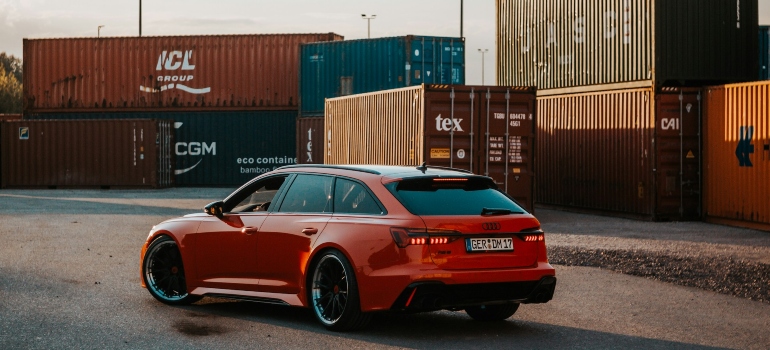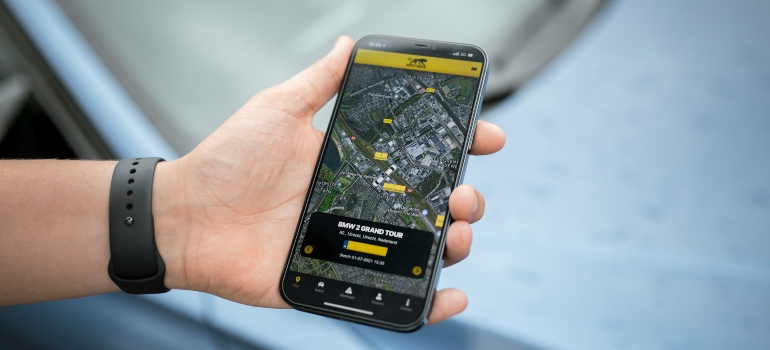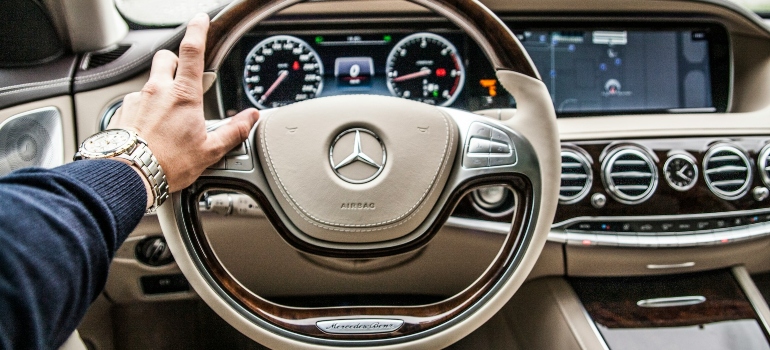When considering shipping a car from California to Washington, it’s crucial to understand the process and what’s involved. This journey, though not as lengthy as coast-to-coast transport, requires careful planning. A key factor in ensuring a positive experience is choosing a reliable shipping company. Reviews and feedback, such as those found when reading the Verified Movers reviews, can be incredibly helpful in making an informed decision. We’ll guide you through the essential steps of shipping your vehicle, backed by statistical information and practical examples.
What Are the Good and Bad Sides of Shipping Your Car?
Shipping a car from one state to another presents various pros and cons that are worth considering.

Pros:
- Convenience: Shipping your car offers significant convenience, especially for long distances like the California to Washington route. It eliminates the need for a long, potentially stressful drive.
- Safety for Your Vehicle: Professional shipping reduces wear and tear on your vehicle, preserving its condition and mileage.
- Time-Saving: You save valuable time that would otherwise be spent on the road, which is especially beneficial for those with tight schedules.
- Flexibility: Shipping services often provide options to suit different needs and budgets, from open-air transport to enclosed carriers for added protection.
Cons:
- Cost: While prices vary, shipping a car can be expensive, depending on factors like the type of transport and service level chosen.
- Waiting Time: The delivery of your vehicle might not align perfectly with your schedule. There can be delays due to traffic, weather, or logistical issues.
- Limited Personal Access: During transit, you won’t have access to your vehicle, which requires planning, especially if you rely on it daily.
Interestingly, the considerations for shipping a car also apply to shipping a motorcycle. While motorcycles might be smaller and potentially cheaper to transport, they still require careful handling and consideration of the same pros and cons. Whether it’s a car or a motorcycle, choosing the right shipping company and service is crucial for a smooth and satisfactory experience.
Understanding Auto Transport from California to Washington
Shipping a car from California to Washington involves navigating a distance of over 1,000 miles, depending on the specific start and end points. This route, primarily along the I-5 corridor, presents unique challenges due to varying terrain and weather conditions. For instance, the Siskiyou Pass, near the Oregon-California border, can be particularly tricky during winter months with its snow and ice.
Statistics show that the average transit time for car shipping in the U.S. is between 1-9 days, influenced by factors such as distance, route, and weather conditions. In this case, the typical transit time can be expected to be on the shorter end of this spectrum, given the direct nature of most routes from California to Washington.
Choosing the Right Shipping Company
In the process of shipping a car from California to Washington, selecting the right shipping company is a critical step. It’s not just about finding the lowest price, but also ensuring that the company is reliable and trustworthy. Reviews and ratings are a valuable resource in this regard. For instance, cross country movers Washington reviews provide insights into customers’ experiences, helping you gauge the reliability of different carriers.
When evaluating a shipping company, consider their track record in handling auto transports over similar distances. Look for companies that specialize in interstate moves and have positive feedback for journeys similar to yours. It’s also helpful to check their safety records, which can be found on the Department of Transportation’s website.
For example, a company that frequently navigates the I-5 corridor and has positive feedback for handling the challenges of this specific route would be a more suitable choice. This shows they are familiar with the potential issues and know how to address them effectively.

Cost Breakdown of Shipping Your Car
Understanding the costs involved in shipping a car from California to Washington is crucial for budgeting. Several factors influence the final price:
- Distance: The route between California and Washington spans over 1,000 miles, which directly impacts fuel costs and driver hours.
- Type of Transport: Choosing between open-air and enclosed carriers affects the price. Open-air is generally more affordable, but puts your vehicle more at risk.
- Vehicle Size: Larger vehicles like SUVs cost more to ship due to their size and weight.
- Urgency: If you need faster delivery, it might cost extra.
On average, shipping a car from California to Washington can range from $500 to $1,200, with the average being $800. This variation depends on the factors mentioned above. For instance, an enclosed transport for a luxury car will be on the higher end of the scale. Reviews on platforms like cross country movers California reviews can provide real-world cost examples from similar shipping experiences.
Preparing Your Vehicle for Transport
Next, let’s discuss getting your car ready for transport. Proper preparation not only ensures safety but also helps avoid unnecessary delays:
- Clean Your Car: A clean car makes it easier to identify any potential damage post-transport.
- Check for Leaks: Ensure there are no fluid leaks that could cause issues during transit.
- Tire Pressure: Correctly inflated tires are important for loading and unloading the vehicle.
- Fuel Levels: Keeping the fuel tank only a quarter full reduces weight and shipping costs.
- Remove Personal Items: Clear out all personal belongings to prevent loss or damage.
These steps will help in the easy loading and unloading of your vehicle. Cross Country Car Shipping, a well-known company in the industry, emphasizes the importance of these preparations in their transport process, for both easier handling and peace of mind.

Ensuring Safety and Insurance During Transit
Safety and insurance are key components in shipping a car from California to Washington. Here’s what you need to know:
- Safety Measures: Reputable companies use various methods to secure vehicles during transport. This includes using straps and wheel nets to prevent movement.
- Insurance: It’s essential to understand what your insurance covers. Standard policies should include coverage for damages and theft during transit.
- Carrier’s Insurance: Always check the transport company’s insurance certificate for validity and coverage details.
For example, a customer might choose an enclosed carrier for extra protection, especially when shipping a classic car. This option, although more expensive, offers peace of mind knowing the vehicle is safeguarded from external elements.
It’s also important to review the insurance specifics. Let’s say your car gets a scratch during transport. Knowing beforehand whether this is covered by the carrier’s insurance can save you from unexpected expenses. Reading reviews can provide insights into how different companies handle safety and insurance issues.
Tracking and Delivery Times for Shipping a Car from California to Washington
When shipping a car from California to Washington, understanding the delivery timeline is essential. Generally, the transit time ranges from 1 to 4 days. However, this can vary due to factors like weather, traffic, and specific route nuances. Here are key points to consider:
- Real-time Tracking: Many shipping companies offer GPS tracking, allowing you to monitor your vehicle’s journey.
- Communication: Regular updates from the carrier keep you informed about the progress and any delays.
- Flexibility: Be prepared for possible delays caused by unforeseen circumstances like road closures or bad weather.
For instance, if you’re shipping an electric vehicle, ensuring the carrier has experience with shipping electric vehicles is crucial. These cars often require special handling and charging stops, which can influence the delivery schedule.

Legal and Seasonal Considerations in Car Shipping
Legal requirements and seasonal factors play a significant role in car shipping. Here’s what you need to know:
- Documentation: Ensure you have the necessary documents like a valid driver’s license and vehicle registration.
- Seasonal Weather: Weather conditions can impact transit times. For example, during winter, you might need to prepare your car for winter shipping, which includes checking antifreeze levels and ensuring the battery is in good condition.
- Demand Fluctuations: Seasonal demand can affect availability and pricing. For example, shipping rates may be higher during peak moving seasons like summer.
It’s important to stay aware of these factors to avoid any surprises during the shipping process.
Navigating the Paperwork
When shipping a car from California to Washington, handling the paperwork correctly is as important as the physical transportation of the vehicle. Here’s a detailed guide to ensure you have all your documents in order:
- Bill of Lading (BOL): This is the primary document used in car shipping. It serves as a receipt and a contract. The BOL will outline the condition of your vehicle at pickup and should be compared to its state upon delivery.
- Insurance Documents: Verify the shipping company’s insurance coverage. Ensure it’s adequate to cover your vehicle in case of damage during transit. Keep a copy of your own vehicle insurance documents handy as well.
- Vehicle Registration and Proof of Ownership: You’ll need to present your vehicle’s registration and proof that you own the car. These documents are crucial, especially when shipping across state lines.
- Photo Documentation: While not an official document, taking date-stamped photos of your vehicle before shipping is highly recommended. This visual record can be vital if you need to file an insurance claim for damages.
- Delivery Receipt: Upon delivery, you’ll sign a receipt. Before signing, inspect your vehicle thoroughly. Any discrepancies from the condition noted in the BOL should be recorded and reported immediately.
- Payment Receipts: Keep all payment receipts as proof of the transaction. This includes deposits and final payments.
- Special Permits (if applicable): In some cases, special permits may be required. This is typically handled by the shipping company, but it’s wise to stay informed.
Having these documents organized and accessible will streamline the process.

Guide to Shipping Luxury or Classic Cars
Shipping a luxury or classic car requires extra care and attention to detail to ensure that these valuable assets are transported safely. When considering shipping classic cars, here are some critical points to keep in mind:
- Choose the Right Transport Type: Enclosed transport is ideal for luxury and classic cars. It offers protection from weather, dust, and road debris.
- Insurance Coverage: Check if the transporter’s insurance policy provides coverage specific to luxury or classic cars. It’s often worthwhile to purchase additional insurance for extra protection.
- Prepare Your Vehicle: Remove any custom accessories or loose items from the car. Ensure the alarm system is deactivated, and the car is in operable condition unless previously arranged.
- Thorough Inspection: Conduct a detailed inspection and document the car’s condition before shipping. Take clear photographs from various angles.
- Special Requirements: Communicate any special requirements or concerns to the shipping company. Classic cars, for example, might have unique handling or loading requirements due to their age or design.
- Choose a Reputable Shipper: Look for a shipping company with experience in shipping classic cars. They should have a track record of handling high-value vehicles with care.
- Regular Updates: Request regular updates during the transport process. Some shippers offer GPS tracking for real-time updates.
Shipping a luxury or classic car is a specialized service where attention to detail and the choice of the right shipping company are paramount. Ensuring these elements can make the difference in delivering your prized possession safely and securely from California to Washington.
Receiving Your Vehicle in Washington
Upon your vehicle’s arrival in Washington, conducting a thorough inspection is essential for ensuring its condition matches what you expected. Here are detailed steps and tips to make this process effective and comprehensive:
- Exterior Check: Start with a full walk-around of your car. Look for any new scratches, dents, or damages that weren’t there before shipping. It’s helpful to compare the current state of your car with photos taken before shipping. This provides clear before-and-after evidence.
- Interior Inspection: Don’t forget to check the interior. Ensure electronic components like the radio, lights, and dashboard indicators function as they should. Look for any unexpected changes or damages to the upholstery or controls.
- Tire and Undercarriage Examination: Check the tires for any new wear or damage. A quick look under the car can reveal if there’s any damage from loading or unloading, such as scrapes or dents.
- Test Drive: If possible, take your car for a short drive. This can help you notice any issues with the alignment, brakes, or engine performance that might have resulted from transit.
- Document and Report: If you find any discrepancies or damages, document them with photos and notes. Report these immediately to the shipping company. This documentation is crucial for any insurance claims or disputes.
- Review and Complete Paperwork: Ensure all transport and delivery documents are thoroughly reviewed. This includes checking the bill of lading for accuracy against your own inspection findings. Sign off only when you’re satisfied with the condition of your vehicle.
- Settle Payments: If there are any remaining balances or fees, ensure they are settled promptly. Clarify any charges you don’t understand and ensure you receive receipts for all transactions.

Now You Are Geared With Knowledge About Shipping A Car From California to Washington!
As you can see, shipping a car from California to Washington involves several important steps. By following these guidelines, you can expect an easier car shipping experience. But keep in mind that if it is your first time doing this it is completely normal to worry – no matter how much you prepare. Take it easy, and trust in the expertise of professionals!




